This pub stands in what was once a field, known, in the 17th century, as Giddy Bridge.
Framed prints and text about The Giddy Bridge.
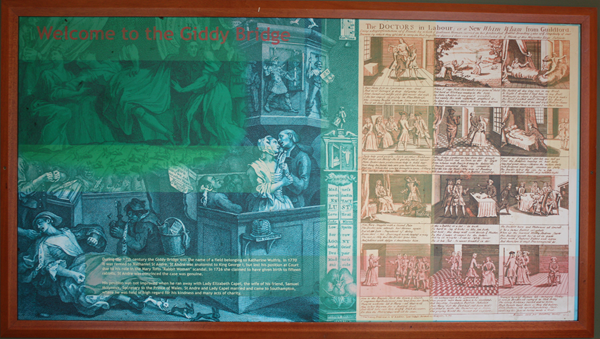
The text reads: During the 17th century the Giddy Bridge was the name of a field belonging to Katherine Wulfris. In 1770 it was rented to Nathaniel St Andre. St Andre was anatomist to King George I, but lost his position at Court due to his role in the Mary Tofts “Rabbit Woman” scandal. In 1726 she claimed to have given birth to fifteen rabbits. St Andre was convinced the case was genuine.
His position was not improved when he ran away with Lady Elizabeth Capel, the wife of his friend, Samuel Molyneax, Secretary to the Prince of Wales. St Andre and Lady Capel married and came to Southampton, where he was held in high regard for his kindness and many acts of charity.
A framed illustration of Mary Tofts “Rabbit Woman” scandal.
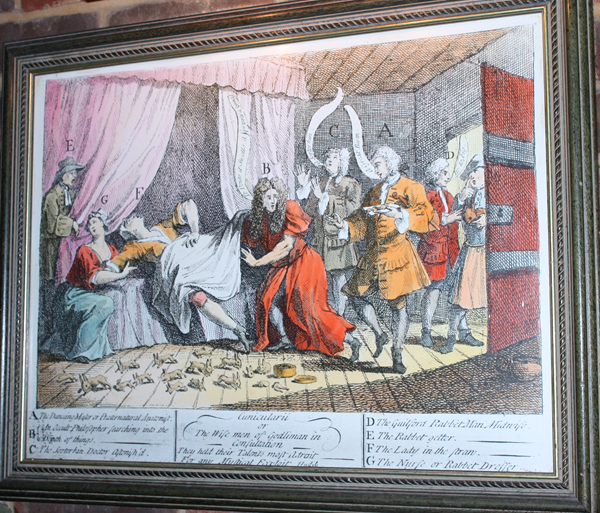
A framed plan and view of a chain bridge erecting over the Menal at Bangor Ferry in 1820.
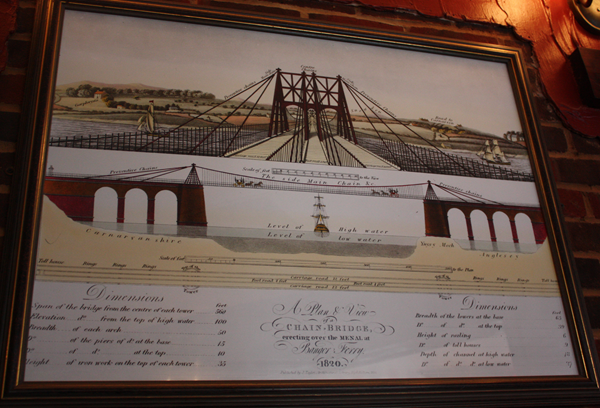
Framed photographs and text about the Cenotaph.
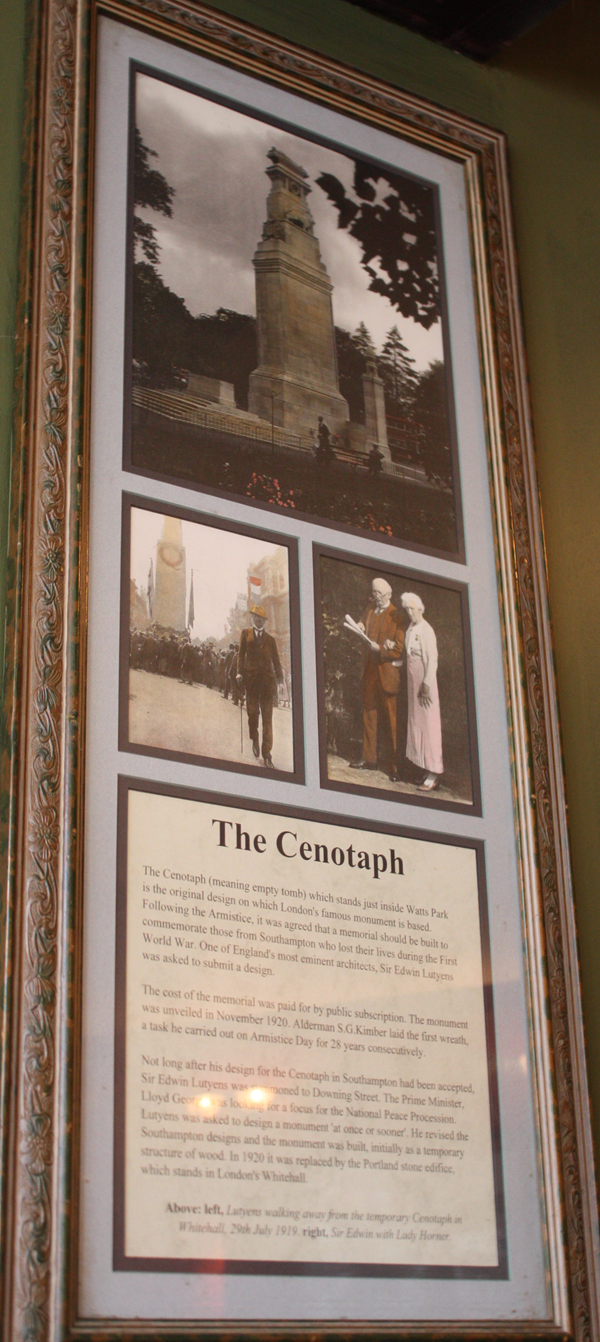
The text reads: The Cenotaph (meaning empty tomb) which stands just inside Watts Park is the original design on which London’s famous monument is based. Following the Armistice, it was agreed that a memorial should be built to commemorate those from Southampton who lost their lives during the First World War. One of England’s most eminent architects, Sir Edwin Lutyens was asked to submit a design.
The cost of the memorial was paid for by public subscription. The monument was unveiled in November 1920. Alderman S.G.Kimber laid the first wreath, a task he carried out on Armistice Day for 28 years consecutively.
Not long after his design for the Cenotaph in Southampton had been accepted, Sir Edwin Lutyens was summoned to Downing Street. The Prime Minister, Lloyd George was looking for a focus for the National Peace Procession. Lutyens was asked to design a monument ‘at once or sooner’. He revised the Southampton designs and the monument was built, initially as a temporary structure of wood. In 1920 it was replaced by the Portland stone edifice, which stands in London’s Whitehall.
Above: left, Lutyens walking away from the temporary Cenotaph in Whitehall, 29th July 1919, right, Sir Edwin with Lady Horner.
Framed portraits and text about Admiral Jellicoe and General Gordon - local men of war.
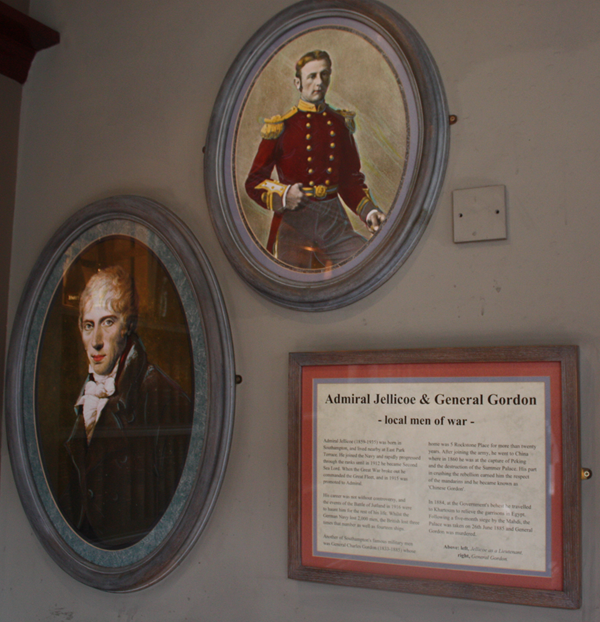
The text reads: Admiral Jellicoe (1859-1935) was born in Southampton, and lived nearby at east park terrace. He joined the Navy and rapidly progressed through the ranks until in 1912 he became Second Sea Lord. When the Great War broke out he commanded the Great Fleet, and in 1915 was promoted to Admiral.
His career was not without controversy, and the events of the battle of Jutland in 1916 were to haunt him for the rest of his life. Whilst the German Navy lost 2000 men, the British lost three times that number as well as fourteen ships.
Another of Southampton’s famous military men was General Charles Gordon (1833-1885) whose home was 5 Rockstone Place for more than twenty years. After joining the army, he went to China where in 1860 he was at the capture of Peking and the destruction of the Summer Palace. His part in crushing the rebellion earned him the respect of the mandarins and he became known as ‘Chinese Gordon’.
In 1884, at the Government behest he travelled to Khartoum to relive the garrisons in Egypt. Following a five-month siege by the Mahdi, the Palace was taken on 26th June 1885 and General Gordon was murdered.
Above: left, Jellicoe as a Lieutenant, right, General Gordon.
Framed prints and text about Bevois Mount House- the gathering place of great 18th century writers.
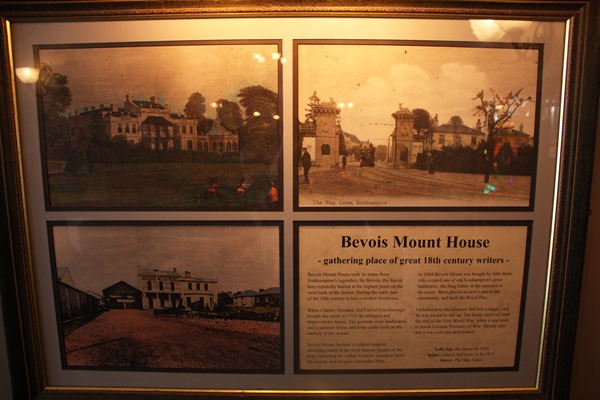
The text reads: Bevois Mount House took its name from Southampton’s legendary Sir Bevois, the Saxon hero reputedly buried at the highest point on the west bank of the Itchen. During the early part of 18th century it was a modest farmhouse.
When Charles Mordant, 3rd Earl of Peterborough bought the estate in 1725, he enlarged and improved the house. The grounds were landscaped, and a summer house and wine vaults built on the summit of the mount.
Bevois Mount became a cultural magnet, attracting many of the most famous figures of the time, including the author Voltaire, Jonathan Swift the satirist, and the poet Alexander Pope.
In 1844 Bevois Mount was bought by John Betts, who created one of old Southampton’s’ great landmarks, the Stag gates, at the entrance to the estate. Betts played an active part in the community, and built the Royal Pier.
Unfortunately his finances ‘fell into a tangle’, and he was forced to sell up. The house survived until the end of the First World War, when it was used to house German Prisoners of War. Shortly after this it was sold and demolished.
Left: top, the House in 1854, below, what it had come to by 1922
Above: The Stag Gates.
Framed photographs and text about Southampton Football Club.
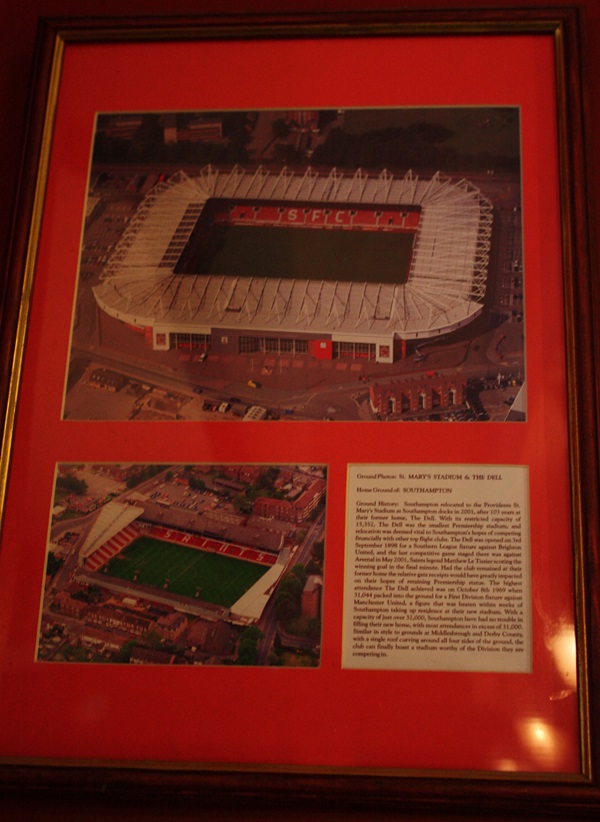
The text reads: Ground Photos: St. Mary’s Stadium and The Dell
Home Ground of: Southampton
Ground History: Southampton relocated to the providents St. Mary’s Stadium at Southampton docks in 2011, after 103 years at their former home, The Dell. With its restricted capacity of 15,352, the Dell was the smallest Premiership stadium, and relocation was deemed vital to Southampton’s hopes of competing financially with other top flight clubs. The Dell was opened on 3rd September 1898 for a Southern League fixture against Brighton United, and the last competitive game staged there was against Arsenal in May 2001, Saints legend Matthew Le Tissier scoring the winning goal in the final minute. Had the club remained at their former home the relative gate receipts would have greatly impacted on their hopes of retaining Premiership status. The highest attendance The Dell achieved was on October 8th 1969 when 31,044 packed into the ground for a First Division fixture against Manchester United, a figure that was beaten within weeks of Southampton taking up residence at their new stadium. With a capacity of just over 32,000, Southampton have had no trouble in filling their new home, with most attendances in excess of 31,000. Similar in style to grounds at Middlesborough and Derby County, with a single roof curving around all four sides of the ground, the club can finally boast a stadium worthy of the Division they are competing in.
A framed collection of Southampton Football Club memorabilia.
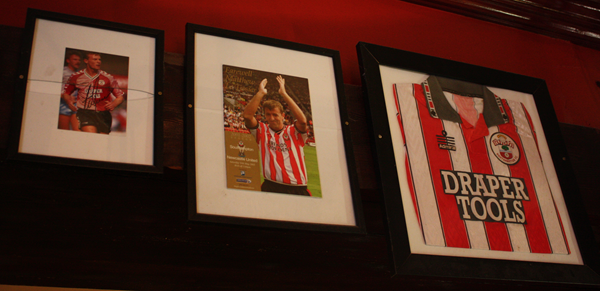
A framed photograph of London Road, Southampton c.1930.
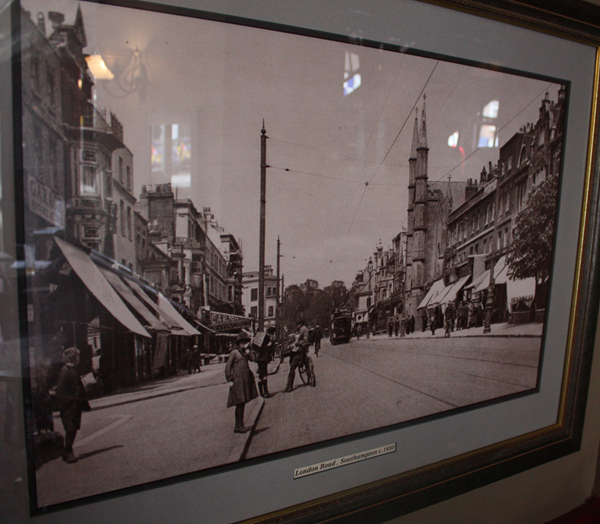
A framed photograph of High Street, Southampton c.1905.
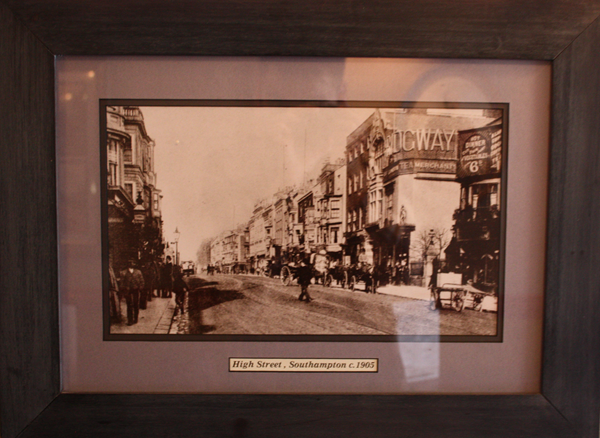
A framed photograph of the Bargate, Southampton c.1908.
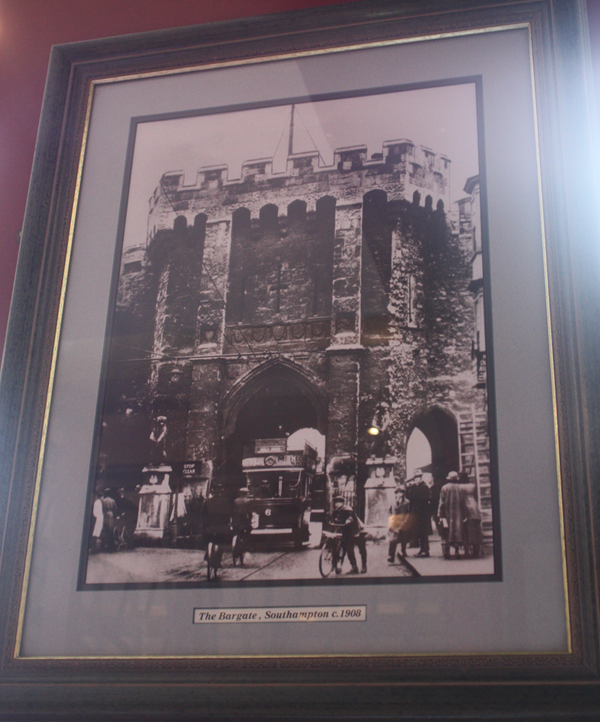
External photograph of the building – main entrance.

If you have information on the history of this pub, then we’d like you to share it with us. Please e-mail all information to: pubhistories@jdwetherspoon.co.uk